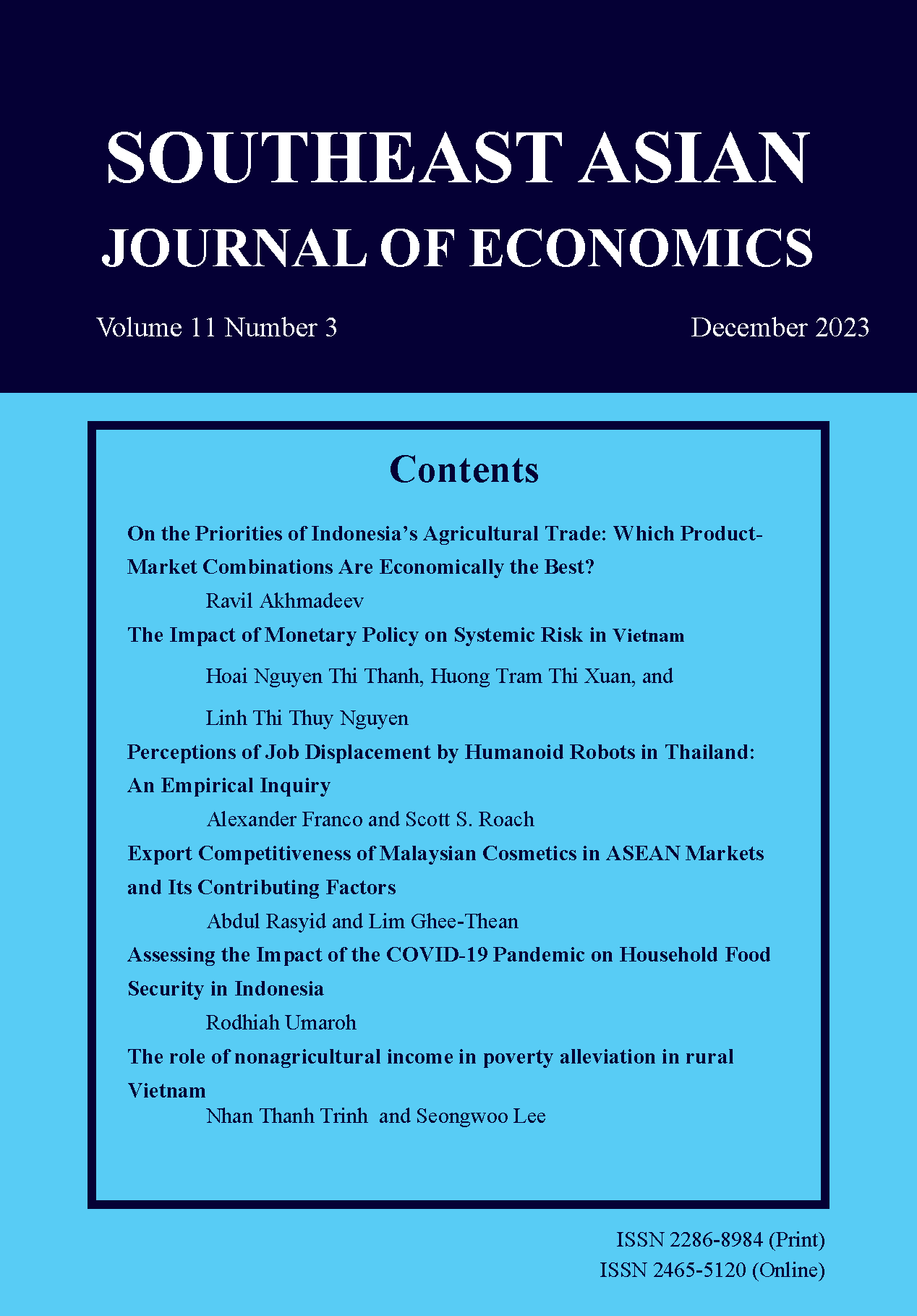Export Competitiveness of Malaysian Cosmetics in ASEAN Markets and Its Contributing Factors
Keywords:
cosmetics, ARDL, export competitiveness, ESIAbstract
This study examines Malaysian cosmetics export competitiveness in ASEAN markets by employing revealed comparative advantage (RCA), revealed symmetric comparative advantage (RSCA), and normalised revealed comparative advantage (NRCA) to measure export competitiveness and as dependent variables to examine competitiveness factors. Independent factors include exchange rate, trade liberalisation, inflation, gross domestic product (GDP), and money supply. The export competitiveness indexes for Malaysian cosmetics reflect a competitiveness disadvantage in ASEAN markets. The Autoregressive Distributed Lag (ARDL) result shows that GDP has a significant negative effect on export competitiveness in both the short and long run. In the long run, inflation has a significant negative impact on export competitiveness. Trade liberalisation and money supply negatively impact export competitiveness in the short run. The Export Similarity Index (ESI) indicates that ASEAN countries have low competition. This study aims to suggest the encouragement of local product consumption and buying within the ASEAN countries because these nations do not compete with each other as their main competitors come from other regions.
Downloads
Published
How to Cite
Issue
Section
Categories
License
Copyright (c) 2023 SOUTHEAST ASIAN JOURNAL OF ECONOMICS

This work is licensed under a Creative Commons Attribution-NonCommercial-NoDerivatives 4.0 International License.
The submission of a manuscript implies that the paper is an original work and has not been published elsewhere. The author(s) authorize the journal to reproduce or distribute the paper in printed or other electronic forms.







